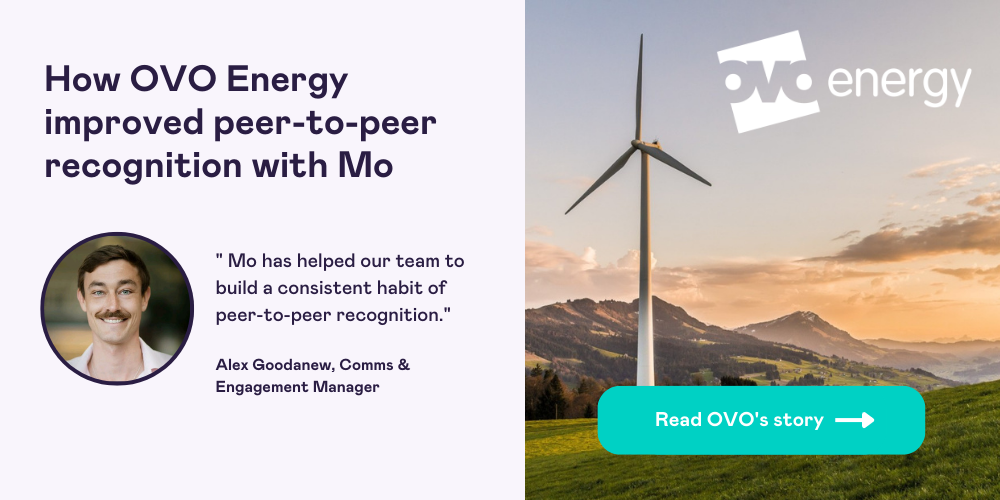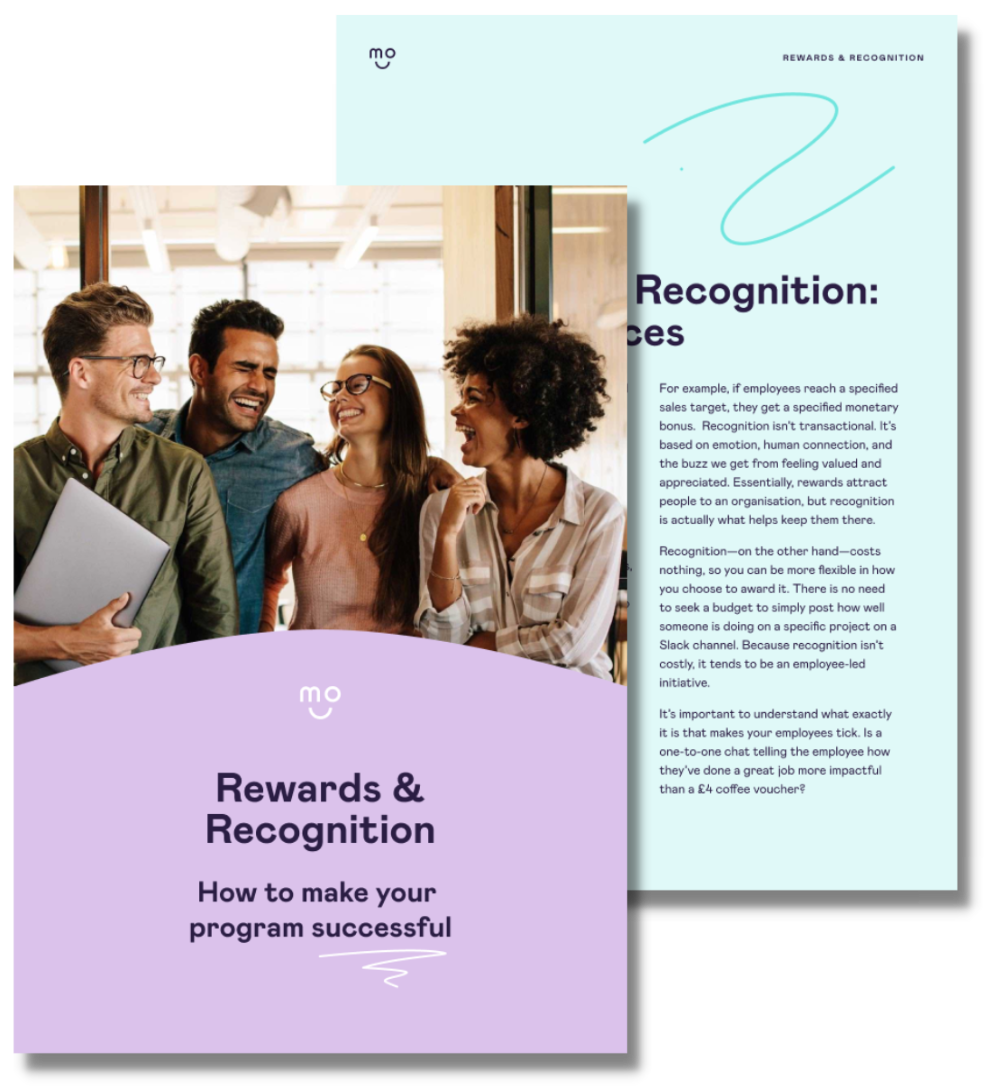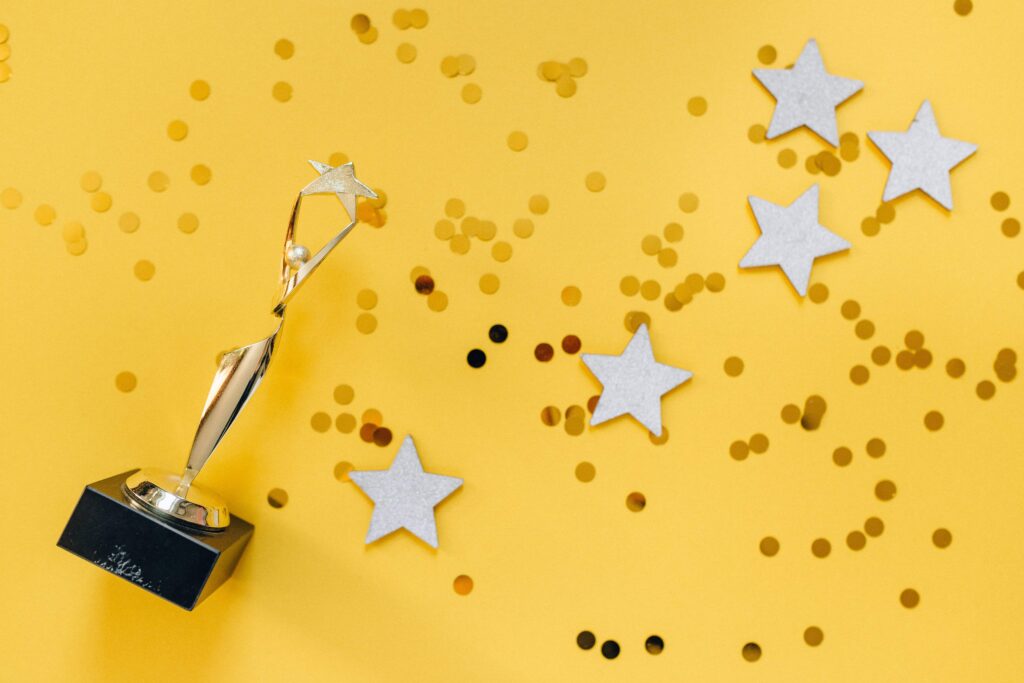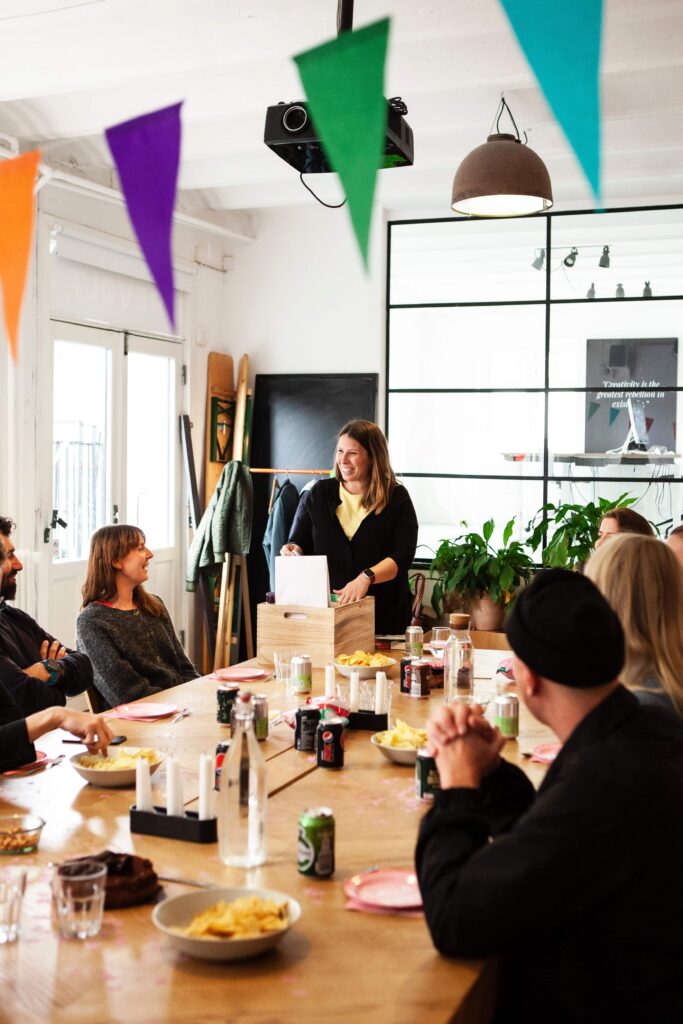Are you struggling to get your R&R program off the ground? We are here to help. Check out this excerpt from our Rewards & Recognition: How to Make Your Program Successful guide.
So, you’ve planned your killer rewards and recognition program, what’s next? Here are a few best practices to keep you at the top of your game:
Separate rewards and recognition
Ask any HR professional, leader or CEO what a reward and recognition program is, and they will likely tell you they’re one thing, when, in reality, they’re actually two separate things. Here’s why:
Rewards are tangible, like bonuses or gift vouchers for your favourite coffee shop. Employee recognition is intangible – it’s the praise and approval of the people you work with.
A management team usually agrees upon rewards. They tend to come with conditions. For example, if employees reach a specified sales target, they get a specified monetary bonus. Recognition isn’t transactional. It’s based on emotion, human connection, and the buzz we get from feeling valued and appreciated. Essentially, rewards attract people to an organisation, but recognition is actually what helps keep them there.
Because we have to factor rewards into the company budget, they must be planned. You’d probably get short shrift from the finance team if you dished out a bunch of cash prizes without prior approval.
Recognition—on the other hand—costs nothing, so you can be more flexible in how you choose to award it. There is no need to seek a budget to simply post how well someone is doing on a specific project on a Slack channel. Recognition isn’t costly, so it tends to be an employee-led initiative.
It’s important to understand what exactly it is that makes your employees tick. Does your colleague prefer to receive recognition in a one-to-one setting, in front of other staff members, or would a voucher to buy their favourite coffee make them feel more appreciated?
PEOPLE PREFER RECOGNITION!
According to a recent study, 70% of people said the most meaningful recognition had no monetary value, while 83% said recognition was more fulfilling than rewards or gifts.
Also, since rewards can often be perceived as putting a value on an employee’s work, the reward might not equate with how much effort the employee feels they’ve actually put in, which some staff may find demotivating.
Stop the top-down only scheme in its tracks
Traditional reward and recognition programs are important, for sure, but many of them fall into making the same mistakes. The biggest mistake? Putting too much emphasis on hierarchy.
We can’t dispute that it’s great to hear feedback and praise from the top dogs, but the truth is, they probably don’t have a clue about what the front-line employees get up to every day. Leaders are the ones who create recognition programs, and they can be naturally biased towards placing more value or emphasis on praise from higher-ups.
This then leads to an unequal flow of recognition. Not only are employees not receiving recognition from their peers, but leaders may not be hearing from the people they manage.

If your employees want to celebrate and recognise each other – let them! Create those opportunities for employees to celebrate their peers’ successes.
According to research, peer recognition is a top factor that pushes employees to go the extra mile because peer recognition strengthens relationships and builds trust. Employees feel more connected to the team, making collaboration more effective.
Connection with peers, not money, is the number one motivator for your people.
Be more consistent!
One of the most common problems with employee reward and recognition programs is inconsistency. It’s important to determine what behaviours and actions you want to recognise and reward, then follow through with recognising them consistently.
If you’re handing out recognition sporadically, one of two things will happen:
- Employees will feel the recognition is unfair and that favouritism is being shown
- Or the company will fail to encourage the desired behaviours and actions through an inconsistent recognition program
So instead of creating a program that’s meant to build unity and encourage collaboration, you’re left with one that creates distrust and separation.
Recognition needs to be ongoing. A 2020 UK workplace culture study found that half of the employees recognised within the past week were very engaged. Fantastic numbers! But unfortunately, those numbers dropped to less than a third of employees recognised in the last month, and just 16% in the last year.
Stop being basic
Rewarding your employees is an incredibly effective way to increase engagement, but incentives can’t follow a one-size-fits-all approach. Every individual is different, so knowing who they are and what works for them is going to be vital to your reward and recognition program’s success.
Personalisation and choice are key here. Where one person might be overjoyed at the thought of a gin hamper, the teetotaler won’t be as thrilled. The same applies to any incentive offering, giving the gift of choice will allow your employees the freedom to choose a prize they are motivated to win!
Add a little pizzazz
Employees can immediately sniff out ineffective incentives that have no real impact. Get out of this money = outcomes mindset and use incentives not only for results but also to demonstrate a deep connection and appreciation for your employees.
Setting up an effective recognition program is an organisational behaviour that will put action behind your company’s core values, vision and mission. It’s more about how your employees can practice and live your values daily rather than the rewards because, as we said earlier, they aren’t as important for some.
A successful reward and recognition program will require support, cooperation and company-wide participation.
52% of employees feel that their recognition program isn’t aligned to organisational goals.
Employee recognition cannot be limited to typical measures like an occasional gift or long service awards. It needs to be an integral part of the company culture with its objectives aligned with company values. Only then can you see if recognition programs make an actual difference to engagement levels.
Include informal and formal recognition
Employee recognition can take on many forms, and it’s most effective when it takes place regularly and in various ways.
Your program should offer both formal and informal recognition. A formal program will recognise teams and individuals that support the objectives and strategic goals of the department or organisation. While managers should use informal recognition daily to acknowledge contributions, such as saying thank you for a job well done.
Create a recognition-rich culture
While managers and leaders are responsible for getting a company’s recognition-rich culture off the ground, everyone needs to be on board if you want it to be widely adopted.
Involving all employees in recognition means they can share their appreciation openly and feel part of a culture where respect and recognition are integral. A truly recognition-rich culture has all employees sharing recognition and appreciation equally.
Use an Employee Recognition Platform
Using an employee recognition software like Mo will streamline a lot of the manual work associated with creating a great reward & recognition program. Automate rewards, keep tight control of budgets, and provide a simple, social media-like feed where everyone can see all the great things going on in the business.
How to make your rewards and recognition program successful
You’ve identified that you need to jazz up your traditional reward and recognition program because you’re not seeing the results, or you’re just ready to hit the ground running in the best way possible. What do you do now? You plan.
In our latest guide, we tell you exactly how to do that.

Rewards & Recognition: How to Make Your Program Successful
Struggling with your reward and recognition program? Find out how to make your program successful in our FREE guide!
Mo is an employee recognition and engagement platform that can help leaders improve collaboration and morale, reduce employee churn and drive change.
Our platform creates a vibrant culture by developing team habits, encouraging people to celebrate success, recognise results and appreciate colleagues.
Your complete toolkit for connecting and motivating teams in the new world of work. Book a demo with our team today!
Transform your culture with Mo

- Improve employee engagement scores
- Reduce employee churn
- Build a collaborative culture




